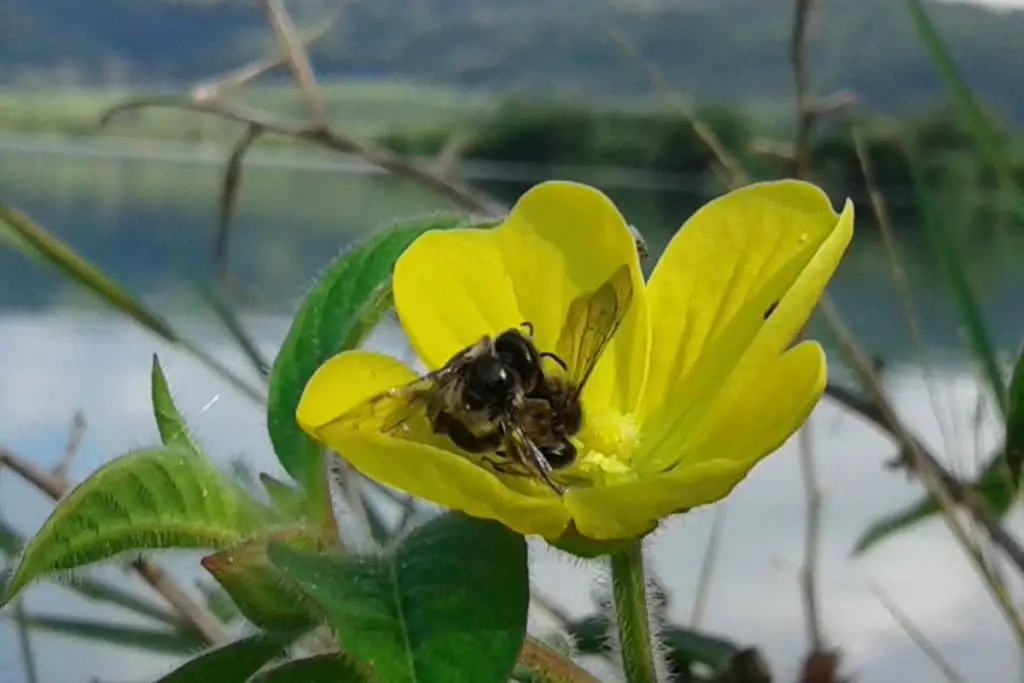Can Bees Sting Other Bees? If you have ever been stung by a bee, then you know that it can be a very painful experience. But have you ever wondered if bees can sting other bees?
The answer is yes, bees can sting other bees. However, they generally only do this if they feel threatened or if they are trying to protect their hive.
For example, bees are very territorial, and if one gets too close to the hive, the bees inside may feel like they are in danger and will sting the intruder.
However, in some cases, the bees will accidentally sting their counterparts mistaking them for the intruder.
Bees may also sting other bees if they are trying to remove them from the hive. This is usually done to bees that are not following the rules of the hive or are not pulling their weight.
Do All Bees Have The Ability To Sting Other Bees?
Most people know that bees can sting, but did you know that not all bees can sting? There are many different types of bees, and not all of them have the ability to sting.
For instance, male bees “known as drones” dont have stingers and cannot sting, only female bees or the queen have a stinger. This is because the stinger is actually an egg-laying organ called an ovipositor.
The queen bee is the only one that can produce, so they have a much longer and sharper stinger than the worker bees! This is used for spawning and adding eggs into the cells of the hive.
However, the queen will also use her stinger to fight with her rivals in the duel. This will be a fight to the death in order to see who will become the new queen.
Related Article:

What Happens When Bees Sting Each Other?
When bees sting each other, they don’t just sacrifice their own lives – they also put their entire hive at risk. This is because when a bee stings another bee, it releases a pheromone that alerts other bees to the danger.
As a result, more bees may come to the aid of the first bee, and the cycle of stinging may continue until the entire hive is put at risk.
Typically, however, when there are two queen bees fighting each other, the other bees will fly around and observe waiting for the winner to emerge.
Once the new queen has emerged, all of the other bees will go back to their normal activities and the hive will continue on as normal.
When Do Female Bees Typically Use Their Sting?
So we know that female bees can sting, but when do they typically use their stinger? Typically, female bees will only use their stingers in two situations.
- Defending Their Hive
- To Protect Themselves
Female bees typically use their sting when an intruder forces entry into the hive or when the hive is otherwise threatened.
When guard bees detect an intruder, they’ll release a pheromone that causes the other bees to become agitated. The bees will then swarm the intruder and attempt to sting them.
They will also use their stinger to protect themselves when they feel threatened. When a bee feels like their life is in danger, they will sting their aggressor to try and protect themselves.
Will They Die After Being Stung?
This is a question with a little bit of misinformation. People often think that all bees die after they sting someone but that’s not actually the case. That’s because there are two types of stingers:
- Barbed Stinger
- Unbarbed Stinger
A bee’s stinger is actually a modified ovipositor, which is a structure used for laying eggs. The barbed stinger gets stuck in the victim’s skin, tearing away from the bee’s body and rupturing the venom sac.
This usually kills the bee within minutes. In contrast, the unbarbed stinger can be retracted back into the bee’s body, allowing the bee to sting multiple times.
Do Queen Bees Sting Other Bees?
So we know that queens will fight and sting each other but what about other bees like worker bees?
Queen bees are the leaders of the hive, and they are responsible for laying eggs and producing pheromones that help to keep the colony organized.
Unlike worker bees, queen bees have a stinger that is not barbed, which means that they can sting multiple times without dying. However, queen bees rarely sting other bees unless they feel threatened.
When a queen bee does sting another bee, it is usually because she perceives the other bee as a rival who is trying to take her place.
In most cases, the sting is not fatal, but it can be painful. If you are ever stung by a queen bee, removing the stinger as quickly as possible will help to minimize the pain.
Related Article:

How Powerful Are Bees Stingers?
Bee stingers are quite powerful for their size. The average bee stinger can penetrate human skin 0.4 millimeters deep.
For perspective, that is about the thickness of a sheet of paper. The bee’s stinger is also very sharp, so it can easily pierce through clothing.
The venom in a bee’s stinger can also vary in strength. Some venoms are designed to simply cause pain, while others can cause serious allergic reactions.
In general, the larger the bee, the more potent its venom will be. So, if enough bees swarm together, they could theoretically produce enough venom to kill a person.
However, this is very rare and typically only happens if the victim is allergic to bee stings.
Conclusion
So there you have it! while bees can sting each other, it’s usually a last resort and used to defend their hives from intruders or other threats.
If you liked this article and want to learn more about bees, don’t forget to check out our other articles on this site.
Related Article:
